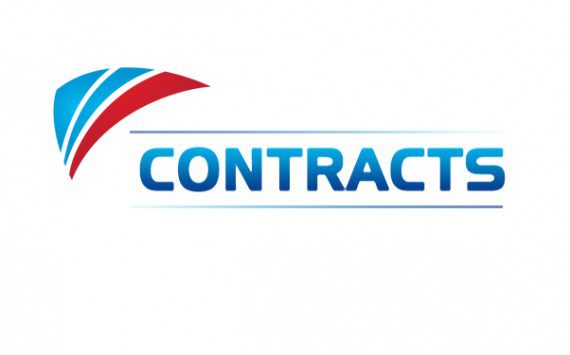LANCASTER, Calif. — In a makeover of the former annual Business Outlook Conference, the newly-launched Antelope Valley Economic Development & Growth Enterprise (AV/EDGE) 2022 Spring Business Summit fully retained the traditional regional prosperity forecast by a professional economist.
This year’s economic status analysis and forecast for 2023 and beyond, delivered by Robert Eyler, Ph.D., president of Economic Forensics and Analytics and professor of economics at Sonoma State University, came down to two primary questions: What’s the probability California will have a recession this year, and if it so, how bad and long-lasting will it be, especially for the Aerospace Valley region of North Los Angeles and Southeastern Kern County?
Exploring factors to be weighed for betting on either eventuality, Eyler focused on the array of recessionary triggers potentially in play, topped by public anxiety fueled by uncertainty about monetary policy and inflation, dysfunctional governance and jolting changes in social behavior, media, culture, demography and geography.
Beyond his expectation that the national Gross Domestic Product (GDP) should reach an annual growth rate of 2.3 percent for the next couple of years, and belief that a sustained recession is unlikely, Eyler left the verdict to his audience of more than 400. Depending on a favorable end to the Russian invasion of Ukraine, he said, “We might just slip through the needle.”
Illustrating his points on big screen graphics, Eyler looked back at the duration and severity of local and county restrictions aimed at stopping the spread of COVID-19. In contrasting the aggressive, widespread and longer-lasting shutdown mandates ordered in Los Angeles County, with more flexible and shorter lockdowns in neighboring Kern County, Eyler said that in recovery of lost jobs, “Kern County is the polar opposite of Los Angeles, with Kern recovering more quickly.
Eyler reported the Aerospace Valley, encompassing portions of both counties, recovered jobs at the statewide average of 98.8 percent.
Los Angeles County’s overall job recovery rate lags at 97.9 percent. Eyler said the bottom line for employment losses in Los Angeles County is that, “One out of 11 jobs are not there after 2 Ω years.” Meanwhile, “In 2021 Kern County recovered all the jobs lost” during Covid.
While the pandemic opened the floodgates to an unprecedented and totally unpredicted decline in California’s population, the pre-COVID California exodus was already showing up at dots on the maps nobody connected.
It took the 2020 census and a more recent Census Bureau follow-up to alert state officials to the fact California’s population of 39.5 million dropped by more than another 250,000 between July 1, 2020 and July 1, 2021.
Eyler said, “the supply side of the labor market” is trending down for a variety of reasons, including, lower levels of international migration, declining birth rates, increasing death rates from an aging population, and the recent speedup in a longer-term trend for growing numbers of Californians to sell out and move to other states or territories for all kinds of reasons.
Accompanying that outward-bound migration is a decline in numbers of people moving to California from other parts of the country.
Given California’s shortage of affordable housing, high taxes, overcrowded freeways, water and electricity shortages, high levels of homelessness and ongoing divisive public policy politics, a drop in population might be seen as a positive. But the downside of disruption in the makeup and demographics of the labor force creates a whole new set of challenges and problems. As speakers pointed out, the houses being sold by departing owners may be home to occupants with entirely different needs and circumstances.
Even with growth, school districts are seeing declining enrollment from California’s declining birthrate. Eyler said both Lancaster and Palmdale lost population during the pandemic. Kern County has regained its numbers.
For the near term future out to the Year 2025, Eyler said AV regional prosperity will rise or fall on issues of virus control, midterm elections, the struggle to reduce inflation — even as gasoline prices top $7 a gallon — what’s happening with water, and whether jobs go back the big office buildings, or stay at home.
Air shows at Edwards
Edwards Air Force Base was represented in a live podium presentation by 412th Test Wing Public Affairs Director Ed “Disco” Buclatin who encouraged individuals, businesses, local governments and community groups to provided sponsorships and volunteer support for the 2022 Aerospace Valley Air Show and STEM Expo the week of Oct. 11-16.
In an info-graphic series he premiered earlier this year for the AV Chambers of Commerce, Buclatin stressed the regional economic value to added by this first full, on-base Edwards Air Show since 2009.
Coinciding with the 75th anniversary of supersonic flight and the 75th birthday of the U.S. Air Force, and combining with a STEM Expo to involve more than 11,000 students, Air Show Week activities are expected to draw up to 100,000 visitors a day on the weekend.
He characterized the return of the AV Air Show to Edwards as a showcase for the partnerships, innovation and centers of technology unique to the Aerospace Valley, “Reinforcing the branding of the Aerospace Valley.”
The weekend’s Saturday and Sunday, Oct. 15-16 performances by the USAF Thunderbirds Aerial Demonstration Team, will include civilian aerobatic maneuvers and flyovers by a parade of fighters, trainers, bombers and heavies, along with industry partner flyovers and military fighter demonstrations.
Opening ceremonies on both days will begin at 11 a.m. Air acts are scheduled to start at 11:30, and the day ends at 4 p.m.
Kern County 2nd District Supervisor Zack Schrivner, whose Aerospace Valley District includes Mojave Air and Space Port, was the sole program speaker from Kern County, although videos were shown.
Schrivner, whose district covers 46 percent of Kern County and abuts the L.A. County line just south of Rosamond, represents interests of Edwards AFB , NASA’s Armstrong Flight Research Center, Mojave Air and Space Port, the Naval Air Weapons Center at China Lake and cities and Rosamond. He told the conference audience about Kern County’s production of 60 percent of the state’s renewable energy; development of a first carbon capture program, and about creation of a 31 million square foot Carbon Management Energy Park built on fallow farmland taken out of production by the state cutback of water for farming.
He also announced plans for constructing a $600 million tribal-owned hotel and casino near the intersection of Interstate 5 and State Route 138.
‘Cactus Curtain’ demolition
Together, in what was described as a demonstration of unity, Lancaster and Palmdale council members and their respective vice mayor and mayor pro tem, dominated time at the podium. Palmdale Mayor Pro Tem Richard Loa declared, “Issues don’t stop at Avenue M,” and Palmdale Councilman Austin Bishop said, “We continue to tear down the Cactus Curtain.”
Palmdale’s presentations reported on continued growth and expansion for defense contractors at Air Force Plant 42, and alluded to a forthcoming six million-square-foot “key project” facility to provide up to 1,000 jobs
Lancaster’s presentations focused on the city’s achievements in becoming the first city to achieve Net Zero in carbon reduction, leading to Mayor R. Rex Parris’ video discussion of efforts to make Lancaster the first city to embrace hydrogen. He said Lancaster is fully committed to solar power and is working internationally to create hydrogen fuels from organic wastes.
Replacing the former AV Board of Trade’s annual day-long Business Outlook Conference, previously held in February, the AV/EDGE’s reformatted program was rolled out live and in-person May 25 in the H.W. Hunter Pavillion at the AV Fair & Events Center.
Uncommonly for this event, not a single county, state or national elected official attended. Most sent legislative staff, and all appeared briefly to comment on the large video screens.












